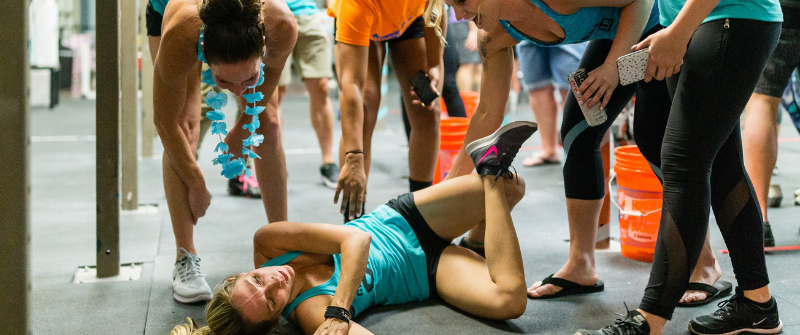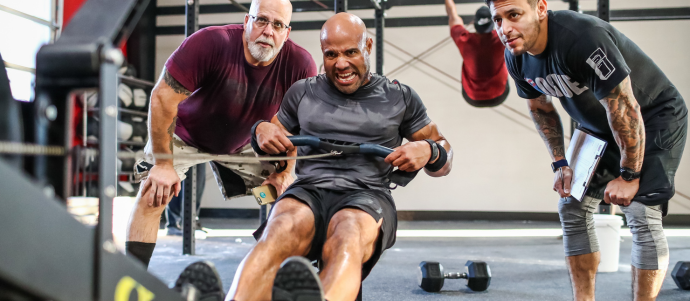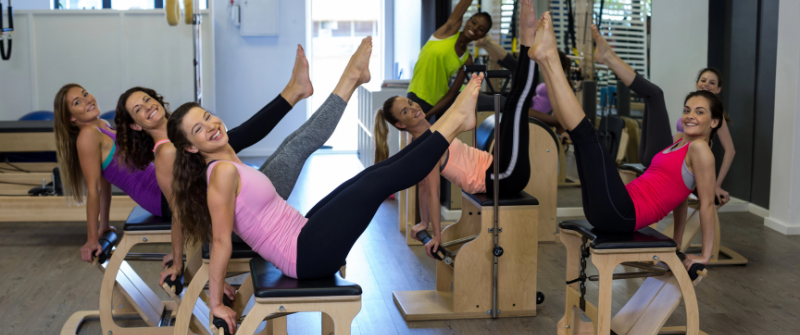
- by NEXO Team
- November 13, 2023
When it comes to fostering healthy habits that promote fitness and overall well-being, gyms play a crucial role for many individuals. However, the business of fitness isn’t without its challenges, and one of the most significant challenges is managing and mitigating the various risks associated with gyms.
Risk management is an important aspect of running any business, and gyms aren’t an exception. Effective risk management not only protects a gym’s financial stability, but also ensures the safety and well-being of its members. If potential risks aren’t properly managed, they could lead to lawsuits, damage to a gym’s reputation, and financial losses. It’s essential for gym owners to be aware of the common claims made against gyms, so in this article, we’ll explore some of these claims and outline strategies to help gym owners avoid them.
Slip, Trip, and Fall Incidents
One of the most common claims that’s made against gyms involves slip, trip, and fall incidents. These accidents can occur due to wet floors, uneven surfaces, or cluttered pathways within the gym, and they can result in injuries to members, leading to liability claims against the gym.
Some prevention strategies for slip, trip, and fall incidents include:
1. Regular Inspections
Gym staff should conduct regular inspections to help identify any potential hazards. This includes checking for wet floors, loose equipment, or any other tripping hazards.
2. Proper Signage
Clear signage should always be placed in areas of the gym where hazards are present, such as wet floors, as it serves as a warning to members and reduces the risk of accidents.
3. Immediate Cleanup
Any spills or messes should be cleaned up promptly to help prevent accidents, and gym staff should be trained to respond quickly to any potential hazards.
Equipment-Related Injuries
Injuries resulting from malfunctioning or poorly maintained gym equipment are another common source of claims. If gym equipment isn’t in proper working condition or lacks clear user instructions, accidents and injuries are more likely to occur.
To help avoid equipment-related injuries, try implementing the following:
1. Regular Maintenance Checks
All equipment in the gym should undergo regular maintenance checks to ensure it’s safe to use. Any faulty equipment needs to be promptly repaired or replaced.
2. Clear User Instructions
Gym members should be provided with clear and concise instructions on how to use equipment in a safe manner. It can also be helpful to have signage and manuals that outline how to use equipment within the gym.
3. Staff Supervision
The gym staff should be available to assist members in using the equipment and to ensure they are using it correctly, as this can help prevent any accidents.
Inadequate or Incorrect Supervision
Occasionally, gym members might not receive the supervision or guidance they need while working out, which can lead to injuries or accidents. This is especially true for those who are new to exercising and may require assistance.
Solutions for avoiding accidents related to inadequate supervision include:
1. Hire Certified Trainers
Gyms should employ certified personal trainers who can provide guidance and support to members who need it, as they’re specifically trained to create safe and effective workout plans.
2. Continuous Staff Training
The gym staff should undergo continuous training to stay updated on best practices and safety protocols, which will help mitigate risks.
3. Clear Member Guidance
Gyms should provide clear guidelines and instructions on how to safely use tools and equipment on the premises, and on how to perform exercises. This can be done through orientation sessions or informational materials.
Health and Sanitation Concerns
With gyms being such a communal place, health and sanitation concerns are very common among gym-goers. Infections can spread through unclean facilities or equipment, which can lead to serious health issues and potential claims against the gym.
Here’s how to mitigate health and sanitation risks:
1. Regular Deep Cleaning
Gyms should establish a rigorous cleaning schedule to ensure that all equipment and facilities are sanitized on a regular basis.
2. Provide Sanitation Stations
All members should have access to sanitation stations with hand sanitizers and cleaning wipes. It can also be helpful to have signs to remind members to clean equipment before and after using.
3. Member Education
Educate members about the importance of hygiene and cleanliness in the gym and promote responsible behavior to help reduce the risk of infections.
Personal Trainer Malpractice
Claims can also arise from incorrect training methods or advice provided by personal trainers, and these can have serious implications for both the gym and the injured party.
Here’s how to help prevent these claims from happening:
1. Ensure Trainers Are Certified
Verify that all personal trainers who work at the gym hold appropriate certifications and qualifications.
2. Ongoing Education
Encourage trainers to pursue ongoing education and to stay updated on the latest fitness trends and safety practices to help ensure gym member safety.
3. Proper Oversight
Establish a system of oversight to monitor the training methods and interactions of personal trainers with members.
Contractual Disputes
Contractual disputes can be common in the fitness industry, and they’re often related to membership contracts, fees, or cancellations. When gyms fail to address these disputes, it can result in legal action.
To help avoid this, try implementing the below:
1. Transparent Terms and Conditions
Make sure that terms and conditions for gym membership are clear and accessible to all members.
2. Clear Cancellation Policies
Always provide clear guidelines for membership cancellations and refunds, as transparency can help prevent any disputes.
3. Open Channels for Member Feedback
Create a feedback mechanism that allows members to voice their concerns, as this will help resolve issues before they escalate.
Security and Privacy Issues
People going to the gym expect their personal belongings to be secure, and they trust the gym to protect their privacy. Theft from lockers or data breaches could lead to legal claims and reputational damage.
Some solutions to prevent this include:
1. Install Security Cameras
Installing security cameras in locker rooms can deter people from stealing, and it can also provide evidence in case of incidents.
2. Use Secure Data Management Systems
Safeguard members’ information by implementing a secure data management system and adhering to protection regulations.
3. Regular Staff Training on Privacy Protocols
Train staff on privacy protocols to ensure sensitive information is handled correctly.
Discrimination or Harassment Claims
Discrimination or harassment claims can be damaging to a gym’s reputation and can result in legal consequences, so it’s incredibly important to create an environment that prioritizes inclusivity and respect for all gym members and staff.
Tips to prevent discrimination or harassment claims include:
Implement a Zero-Tolerance Policy: Develop and enforce a zero-tolerance policy against discrimination and harassment within the gym.
Staff Training on Diversity and Inclusion: Provide diversity and inclusion training to all staff members to educate them on how to create a welcoming atmosphere.
Establish a Reporting Mechanism: Create a confidential and accessible reporting mechanism for members and staff to report incidents of discrimination or harassment.
Nutrition and Supplement Guidance Issues
Some gyms will offer nutrition and supplement guidance to their members, but claims can arise if members experience any adverse reactions to recommended supplements or nutrition plans.
To prevent this from happening, try the below:
1. Employ Certified Nutritionists
Ensure that all nutritionists who are providing guidance to members are certified to offer nutrition advice.
2. Clear Disclaimers
Make it clear to members that nutritional advice is for informational purposes only, and that individuals should always consult with a healthcare professional before starting new supplements or making changes in their diet.
3. Regular Updates on Supplement Safety
Stay informed about the safety and efficacy of supplements, and update guidance accordingly.
Emergency Response Failures
In the case of a medical emergency, gym staff needs to be trained to respond effectively, as failure to do so can result in serious consequences.
To mitigate emergency response failures, implement the following:
1. Regular First-Aid Training
Train all gym staff in first aid, including CPR and AED use, to ensure they will be able to respond and assist in the case of a medical emergency.
2. Accessible Emergency Equipment
Make sure that emergency equipment is always readily accessible and regularly maintained.
3. Conduct Emergency Drills
Practice emergency response drills to ensure that staff members are prepared to handle a crisis.
Proactive Measures for Gyms
In addition to the strategies mentioned above, gyms can also take several proactive measures to manage risks effectively:
1. Liability Waivers
Implement liability waivers that clearly outline risks associated with exercise and membership at the gym. However, keep in mind that waivers have limitations and might not fully protect the gym from liability in every situation.
2. Insurance
Invest in comprehensive liability insurance for gyms. Different types of insurance for gyms, such as general liability and professional liability, can provide essential protection to your business.
3. Safety Seminars and Member Orientations
Host seminars and member orientations to educate the gym staff and members about safety protocols, emergency procedures, and rules of the gym.
Conclusion
As demand within the fitness industry continues to grow, it’s a dynamic and rewarding business to be involved with. However, owning a gym comes with inherent risks that have to be carefully managed. Understanding and addressing common claims made against gyms can help owners protect their businesses, ensure the safety of their members, and maintain a positive reputation within the community. A proactive approach to risk management, including regular training, clear guidelines, and comprehensive insurance for gyms, is important for the long-term success of your business.
To make sure you’re creating a safe and welcoming environment for your gym members, we encourage you to review and update your safety protocols regularly.
Categories
Fill out a short form to contact us with your questions or to receive a customized quote.
Recent Posts
-
 Is Your Pilates Studio Prepared for a Medical Emergency?
January 5, 2026
Is Your Pilates Studio Prepared for a Medical Emergency?
January 5, 2026 -
 NEXO’s Affinity Program: How Fitness Suppliers and Associations Can Partner for Profit and Protection
December 5, 2025
NEXO’s Affinity Program: How Fitness Suppliers and Associations Can Partner for Profit and Protection
December 5, 2025 -
%20(1).png) How to Insure an MMA Gym Without Paying for Coverage You Don’t Need
December 5, 2025
How to Insure an MMA Gym Without Paying for Coverage You Don’t Need
December 5, 2025 -
 Mastering Liability for Jiu-Jitsu Tournaments and Martial Arts Events
December 5, 2025
Mastering Liability for Jiu-Jitsu Tournaments and Martial Arts Events
December 5, 2025 -
 From Zen to Zoning: What Every Yoga and Pilates Studio Owner Should Know Before Signing a Lease
December 5, 2025
From Zen to Zoning: What Every Yoga and Pilates Studio Owner Should Know Before Signing a Lease
December 5, 2025

